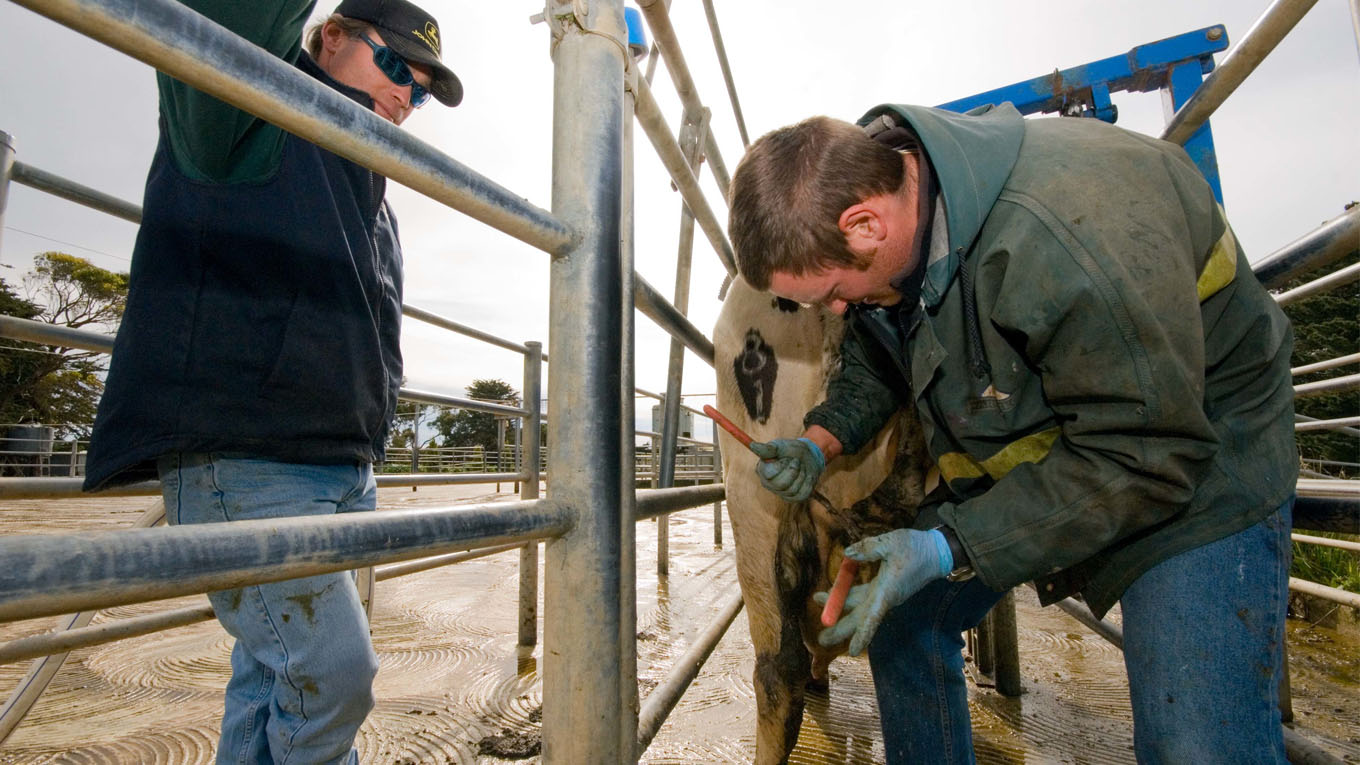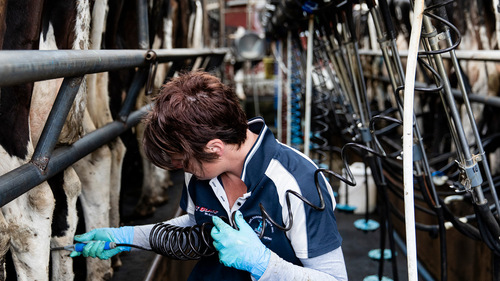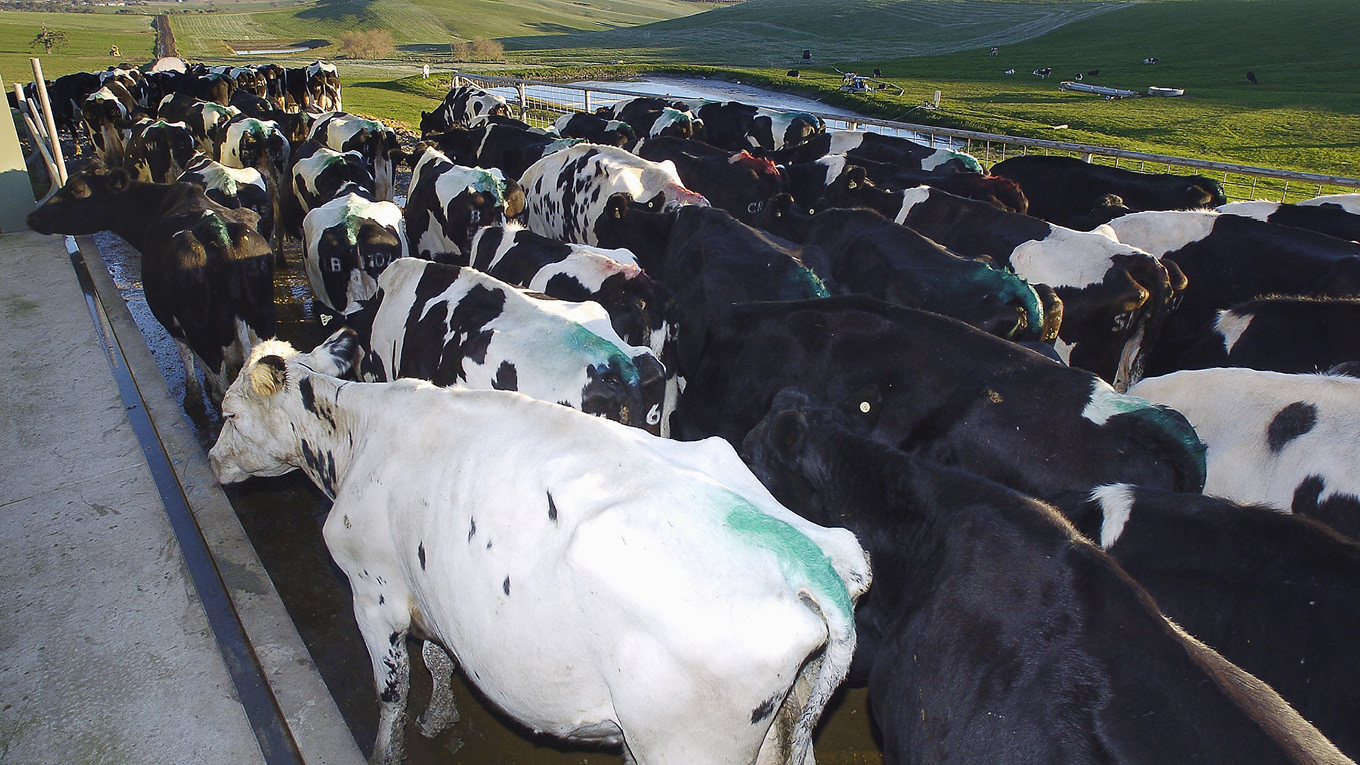Body Condition Scoring
Body condition scoring is a visual assessment of the amount of fat and muscle covering the bones of a cow, regardless of body size. It is not affected by gut fill or pregnancy as liveweight is. It involves assessing specific locations on the cow to determine how thin or fat the cow is. In Australia, a 1 to 8 scoring system is used.
Assessing a herd's body condition profile provides a standardised measure of the cows' body energy and protein reserves at critical times during their lactation cycle. A body condition profile gives an indication of a herd's:
- Previous level of feeding
- Likely future production and fertility
- Future feed requirement
Effective management of body condition and nutrition improves herd reproductive performance, milk production and enhances cow health and welfare.
The 1 to 8 body condition scale
Different systems are used to score the body condition dairy cattle and beef cattle. In Australia, an eight-point scale is most commonly used for dairy cattle.
A cow with a BCS of 1 is considered extremely thin, the result either of severe under-feeding or disease.
A cow with a BCS of 8 is considered extremely fat and is at risk of several metabolic diseases after calving.
Body condition scoring using this eight-point scale provides a quick, easy, consistent way to assess body condition in dairy cattle. In Dairy Australia's cow body condition scoring condition handbook, only cows with a BCS of 3 to 6 are shown as healthy. Productive cows in commercial dairy herds should always be within this range.
Dairy Australia has developed several tools to assist dairy farmers in assessing their herd's body condition profile.
Cow body condition scoring handbook
Dairy Australia's cow body condition scoring handbook is a complete guide to monitoring and managing a herd's body condition.
The main sections of the booklet are listed below. Download the full handbook here, or download specific chapters at the bottom of this page.
- Why body condition score your herd?
- What is body condition scoring?
- Body condition targets
- How to body condition score a cow
- Get your eye in first
- When and why to score your herd
- How many cows to score
- Where to score cows
- Recording body condition scores-sheets
- Recording body condition scores-app
- What to do if results are off target
- Additional energy inputs needed for BCS gains
- Benefits from achieving BCS targets
To request a hard copy of the Dairy Australia cow body condition scoring handbook contact your local team.
Cow body condition scoring smartphone app
Dairy Australia's cow body condition scoring app has been developed to assist farmers in understanding, monitoring and managing their herd's body condition.
It has three methods of scoring (beginner, intermediate and advanced), graphical presentation of the results and the option to email results to the user or an advisor. It also has tips and advice for situations where results are off-target and in-built scoring reminders based on a herd's stage of lactation.
The app can be used to get a standardised measure of a cow's body energy and protein reserves at critical times during their lactation cycle and to assess a herd's previous level of feeding, likely future production, future feed requirements and fertility.
Features of the app
- Can be used for multiple farms and cow groups
- Designed for use at the most important stages of the annual lactation cycle
- Simple two-step 'hands off' scoring method
- Large graphics and photos provided for each score
- Choice of three scoring methods to suit beginners, intermediate and advanced users
- Herd results provided instantly after each scoring event, with suggested actions to consider
- Ability to enter comments with results of each scoring event
- Results summary is emailed to the user and anyone else the user wishes
- Automatic reminder for when next scoring event in due (optional)
- Notes on key aspects of body condition scoring
To download:
For iPhone users, go to the app on iTunes to download.
For Android users, download the app on Google Play (search using Dairy Australia).
Cow body condition recording scoring sheets
Cow body condition recording sheets are an easy-to-use, paper-based aid for measuring and managing body condition score.
Scoring the same cows each time herd scoring is done is not necessary, so each cow is recorded simply with a mark. By recording condition scores on the recording sheet as shown in this example, dairy farmers can create their own graph progressively, showing the distribution of scores in their herd.
Another version of the recording sheet is available for farmers wishing to record the ID number of each cow.
Downloads
-
Cow body condition scoring handbook
PDF, 878.83 KB -
Body condition score BCS recording sheet general use
PDF, 85.18 KB -
Body condition score BCS recording sheet template cowID
PDF, 163.89 KB -
BCS handbook 01 why bodycondition score your herd
PDF, 24.55 KB -
BCS handbook 02 what is body condition scoring
PDF, 26.29 KB -
BCS handbook 03 body condition targets
PDF, 63.64 KB -
BCS handbook 04 BCS How to body condition score a cow
PDF, 772.56 KB -
BCS handbook 05 get your eye in first
PDF, 111.01 KB -
BCS handbook 06 when and why to score your herd
PDF, 41.51 KB -
BCS handbook 07 how many cows to score
PDF, 22.65 KB -
BCS handbook 08 where to score cows
PDF, 18.5 KB -
BCS handbook 09 Recording body condition scores sheets
PDF, 115.74 KB -
BCS handbook 10 Recording body condition scores app
PDF, 71.33 KB -
BCS handbook 11 what to do if results are off target
PDF, 51.63 KB -
BCS handbook 12 Additional energy inputs needed Lactating cows vs dry cows for BCS gains
PDF, 102.97 KB -
BCS handbook 13 Benefits from achieving BCS targets
PDF, 26.39 KB


